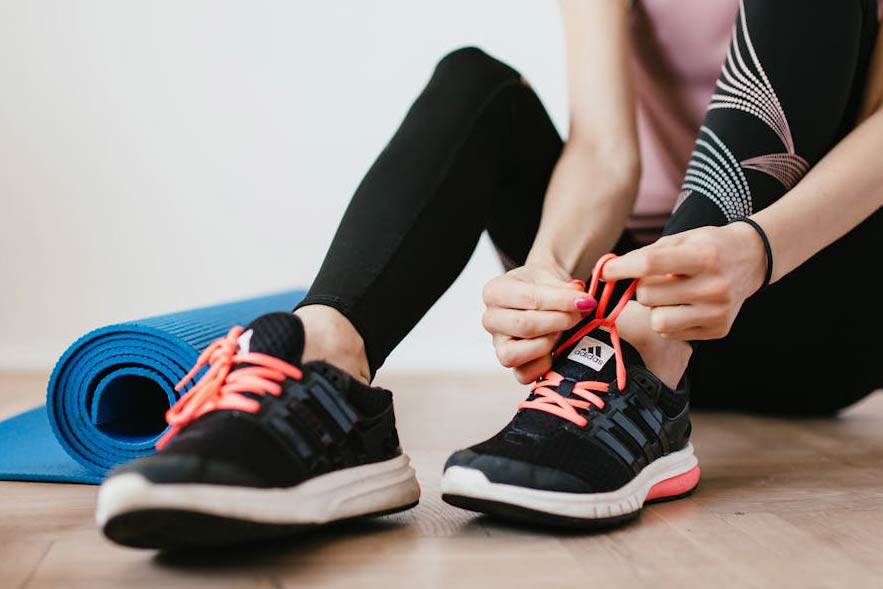
7 Postural Exercises to Incorporate Into Your Day
Incorporating postural exercises into your daily routine can help counteract the negative effects of prolonged sitting and promote better alignment and balance. Here are 7 simple postural exercises that you can incorporate into your day to improve your overall posture and well-being.
1. Shoulder Blade Squeezes
Sit or stand with your arms relaxed at your sides. Gently squeeze your shoulder blades together as if you’re trying to hold a pencil between them. Hold for a few seconds, then release. Repeat 10-15 times. This exercise helps strengthen the muscles between your shoulder blades, promoting better posture and reducing upper back tension.
2. Chin Tucks
While seated or standing tall, gently tuck your chin towards your chest, lengthening the back of your neck. Hold for a few seconds, then return to the starting position. Repeat 10-15 times. Chin tucks help counteract forward head posture, a common issue associated with prolonged screen time, by strengthening the muscles at the front of the neck and improving cervical alignment.
3. Thoracic Extension Stretch
Sit on the edge of a chair with your feet flat on the floor. Interlace your fingers behind your head and gently arch your upper back, lifting your chest towards the ceiling. Hold for 15-30 seconds, then return to the starting position. Repeat 2-3 times. This stretch helps counteract slouching and improves thoracic spine mobility, reducing stiffness in the upper back.
4. Chest Opener Stretch
Stand tall with your feet hip-width apart. Clasp your hands behind your back and gently straighten your arms while lifting your chest towards the ceiling. Hold for 15-30 seconds, feeling a stretch across the front of your chest and shoulders. Repeat 2-3 times. This stretch helps open up the chest and shoulders, counteracting the forward rounding of the shoulders often associated with poor posture.
5. Wall Angels
Stand with your back against a wall, feet hip-width apart, and arms bent at 90 degrees with your elbows and wrists touching the wall. Slowly slide your arms up the wall while keeping your elbows and wrists in contact with the wall at all times. Once your arms are fully extended overhead, reverse the movement and return to the starting position. Repeat 10-15 times. Wall angels help improve shoulder mobility and strengthen the muscles of the upper back, promoting better posture alignment.
6. Hip Flexor Stretch
Kneel on one knee with the other foot flat on the floor in front of you, forming a 90-degree angle with your knee. Gently shift your weight forward, feeling a stretch in the front of your hip and thigh. Hold for 15-30 seconds, then switch sides. Repeat 2-3 times on each side. This stretch helps counteract tightness in the hip flexors, which can contribute to pelvic tilt and poor posture.
7. Core Engagement
Sit or stand tall with your shoulders relaxed and your spine neutral. Engage your core muscles by drawing your navel towards your spine, as if you’re trying to button up a tight pair of pants. Hold for 10-15 seconds, then release. Repeat 10-15 times throughout the day. Core engagement exercises help stabilize the spine and pelvis, improving overall posture and reducing the risk of lower back pain.
Incorporating Postural Exercises into Your Day
To reap the benefits of these postural exercises, aim to incorporate them into your daily routine consistently. Consider setting reminders on your phone or computer to prompt you to perform these exercises regularly throughout the day. Additionally, try to break up long periods of sitting by taking short movement breaks every hour or so, incorporating stretches and postural exercises to keep your body feeling strong and balanced.
Improving posture is essential for maintaining overall musculoskeletal health and reducing the risk of pain and discomfort associated with poor alignment. By incorporating these seven simple postural exercises into your daily routine, you can strengthen key muscle groups, improve mobility, and promote better posture alignment throughout the day. With consistent practice and mindfulness, you can cultivate healthier movement habits and enjoy the benefits of improved posture for years to come.
